Guitar Legends: Tom Morello – why Rage’s main man is the master of riffs
Master of the Whammy pedal, preacher of righteous riffs and fan of – frankly – quite old gear, Rage Against The Machine’s Tom Morello is a guitar player like no other. His imagination is as important as his gear, but here’s a guide to the tools and sounds of his trade…
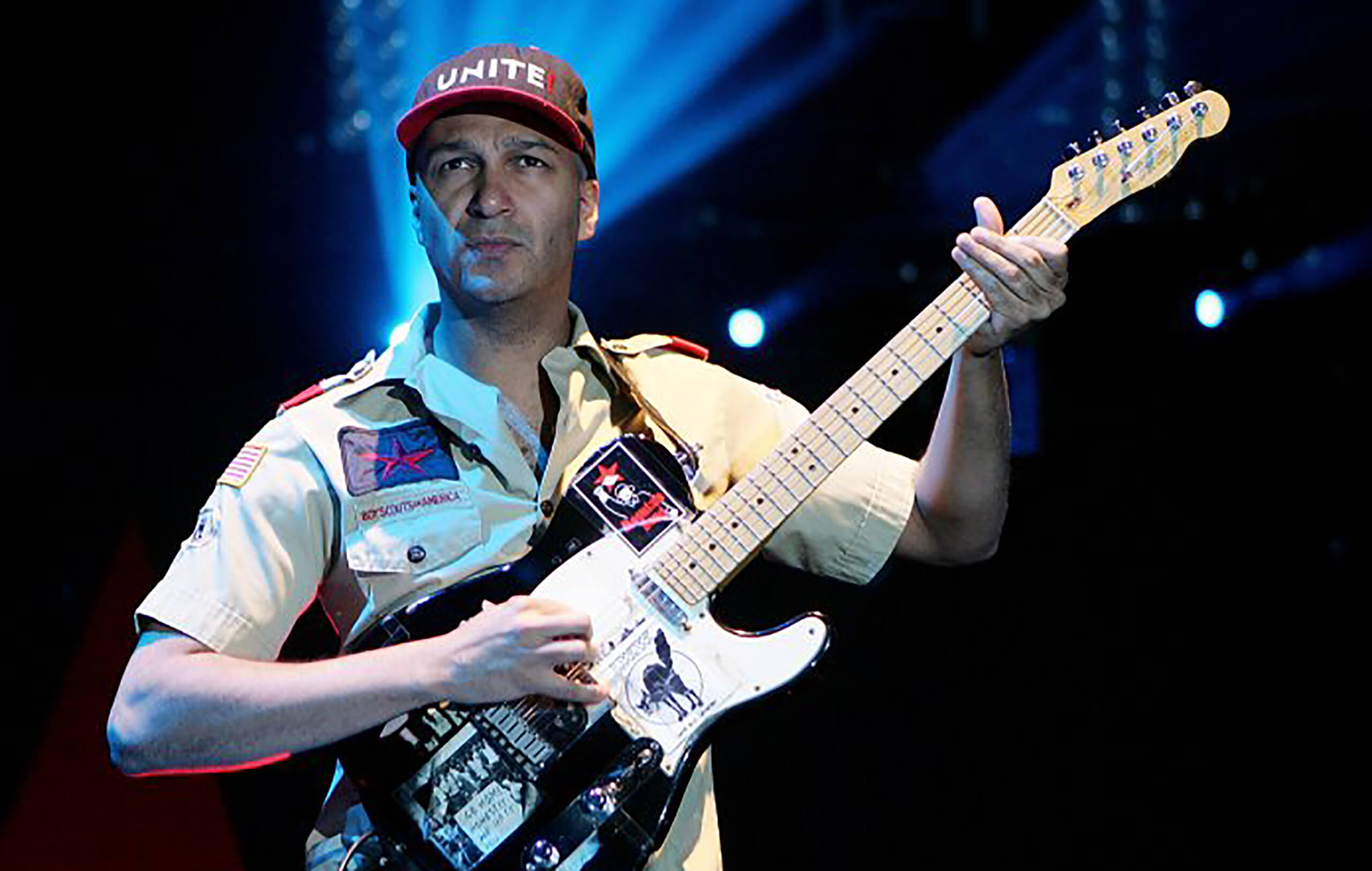
Tom Morello. Image: Ethan Miller / Getty Images
Tom Morello isn’t like other guitar greats. Plenty devote endless hours a day practising their shredding, but not many do it while simultaneously studying for a Bachelor’s degree at Yale. Few lead guitarists describe their role in as “being the DJ in the band”. You won’t find many who devote years coaxing otherworldly sounds out of new techniques and a bunch of boxes, and then go on tour as guitarist in Bruce Springsteen’s non-more classic E Street Band…
Morello’s ‘otherness’ is why he’s so admired, but also one reason not many other players compare. Muse’s Matt Bellamy is an enthusiastic student of Morello’s ethos, (the two recently gifted each other guitars, sweet!) but who Morello himself took inspiration from? That’s harder to define. In his own view, Run-DMC and Public Enemy’s production team of The Bomb Squad have provided a keener compass for his playing than the usual metal, rock and soul players that are the ‘norm’ of modem guitar language.
Over the years, he’s mixed it up too. His major artistic ventures – Rage Against The Machine, Audioslave, rap/rock supergroup Prophets Of Rage, solo escapades as The Nightwatchman and those sideman stints with The Boss have all involved different disciplines… if discipline is actually the right word. Because Morello doesn’t really follow accepted rules, he invents new ones. Despite all this, the tools of his trade remain relatively simple, as we’ll detail here. The most important bit of hardware in Morello’s armoury is undoubtedly his brain…
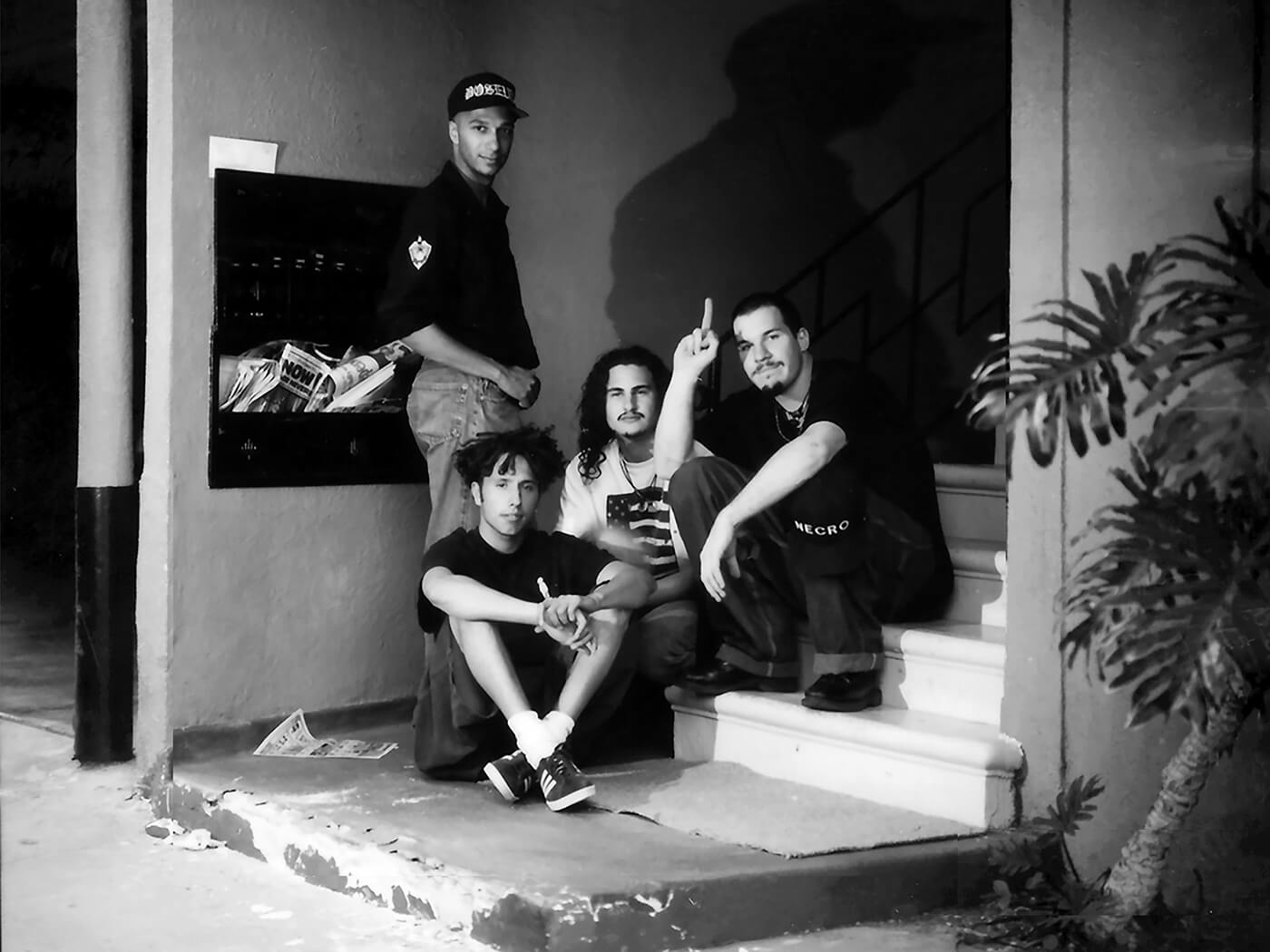
In his own words
“The guitar really matters to me. It’s such an important instrument on the face of the planet but to me personally. While guitar music may not be choking the top of the charts as it once did, it is no less great or important than it’s ever been.”
“I practised playing guitar eight hours a day, every day and amassed a pretty solid technique on the instrument. But I sounded like every other guitar player that could play shredding solos. I thought: If there are three shred guitarists on this shitty college campus stage, there doesn’t need to be a fourth.”
“My guitar playing is solely a product of my determination to explore, rather than any sort of great mastery of technique. A lot of noises I make on the guitar you can make very easily. You just have to think.”
Rock, riffs and radicalism – Tom Morello’s music education
Morello was an only child, born in Harlem, NYC, but raised in Libertyville, Illinois. His upbringing was pretty unique: his Italian American mother was an activist and also teacher at the same Libertyville school he later attended, and his errant father was Kenya’s first ambassador to the United Nations. Politics was all around young Morello, who took his mother’s name, but so was rock music. A classmate at Libertyville High School was future Tool axeman Adam Jones.
Morello debuted as only a singer in covers band Nebula, playing Zeppelin, Steve Miller Band, and Bachman-Turner Overdrive. But once he bought his first Kay electric guitar, with his mother buying him an amp, he took that very seriously: his music tastes soon grew from straight rockin’ (the first single he bought was Sweet’s Desolation Boulevard) to the more politically-charged (The Clash’s Combat Rock). By the time was writing his own songs for next band, Electric Sheep (with Adam Jones) on bass, he said he was profoundly influenced by Run-DMC, and DJ Jam Master Jay in particular. This influence can be heard on songs like RATM’s Bulls On Parade where his guitar solos mimic a DJ scratching. Yet underneath it all, he still loved banging rock – Iron Maiden, Alice Cooper, Led Zeppelin and Black Sabbath, whose Tony Iommi he’s cited as one of his biggest influences as a riff writer.
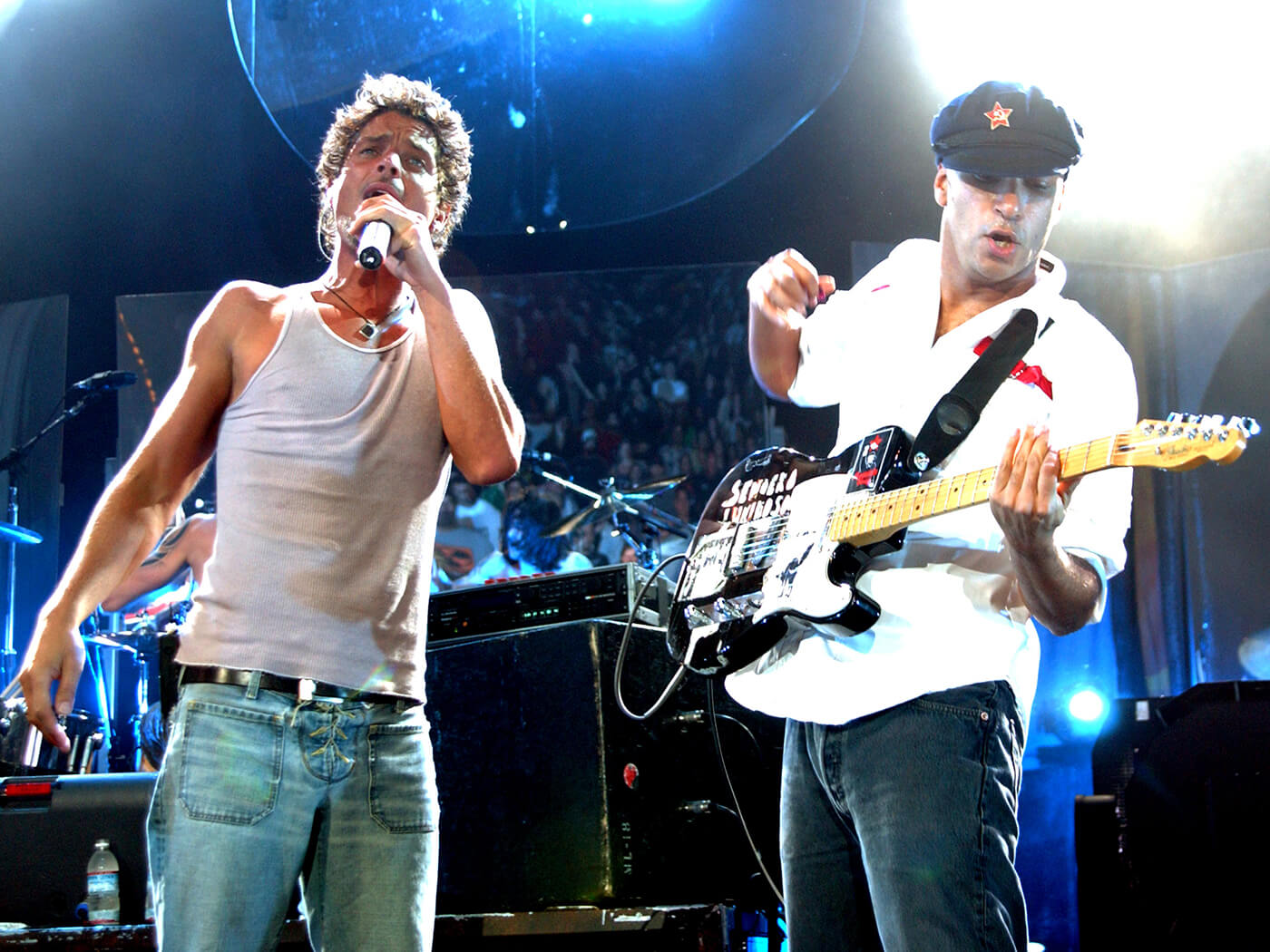
As a student of Social Studies at the lauded Yale University, Morello threw himself into both left-wing academia and left-field axe studies – it was where he claims to have often practised guitar eight hours a day. His main guitar back then was a very metal Gibson Explorer II.
Post-graduation, Morello moved to LA to pursue music as a career, but found himself “unemployable” so he sometimes funded himself by working as an ‘exotic dancer’, ie a stripper (!). “You could make decent money doing that job – people do what they have to do,” he reasoned. “Brick House [by The Commodores] was my jam!”
His then-latest band was one called Lock Up, which involved drummer Brad Wilk, and when they folded, he enlisted acquaintance Zach De La Rocha, whose rhymes he admired. De La Rocha brought bassist friend Tim Commerford on-board and Rage Against The Machine was born…
Rage against the machines – RATM to Audioslave
By this point, Morello had his hardware armoury in place, and he’s always favoured Fenders (or heavily modified Strat-esque mongrels). In RATM and Audioslave, there are two very famous ones. His ‘Arm The Homeless’ guitar was a constant from 1986 or so, when Morello was 22. It was originally built to order by Performance Guitar USA in Hollywood to Morello’s specifications. It featured a Stratocaster body with a Performance Corsair neck, two Seymour Duncan JB pickups and a chrome original Floyd Rose tremolo.
However, when Morello took delivery of the guitar he hated everything about it and completely reassembled it. Since then, just about everything has been changed countless times and the only thing that remains from the original is the Strat body. The body is finished in light blue with the words ‘Arm The Homeless’ written on it in black and red. It has a three-way pickup selector toggle switch mounted on the lower horn, two volume knobs and one tone knob, four hippos painted by Morello on the front, one large hippo painted upside down on the back, and a hammer and sickle symbol sticker. The most noted spec has a graphite Kramer-style bargain-bin neck (unknown make) with a 22-fret rosewood fretboard and a ‘hockey stick’ headstock. The guitar also has Gotoh Crownhead tuners, an EMG 85/EMG H pickup set and an Ibanez Edge double-locking Tremolo. It’s Morello’s own ‘FrankenStrat’, if you like. TM says he was “never happy” but eventually became “settled” with it: “I’m a creature of habit.” A repro of Arm The Homeless has smaller hippo graphics.
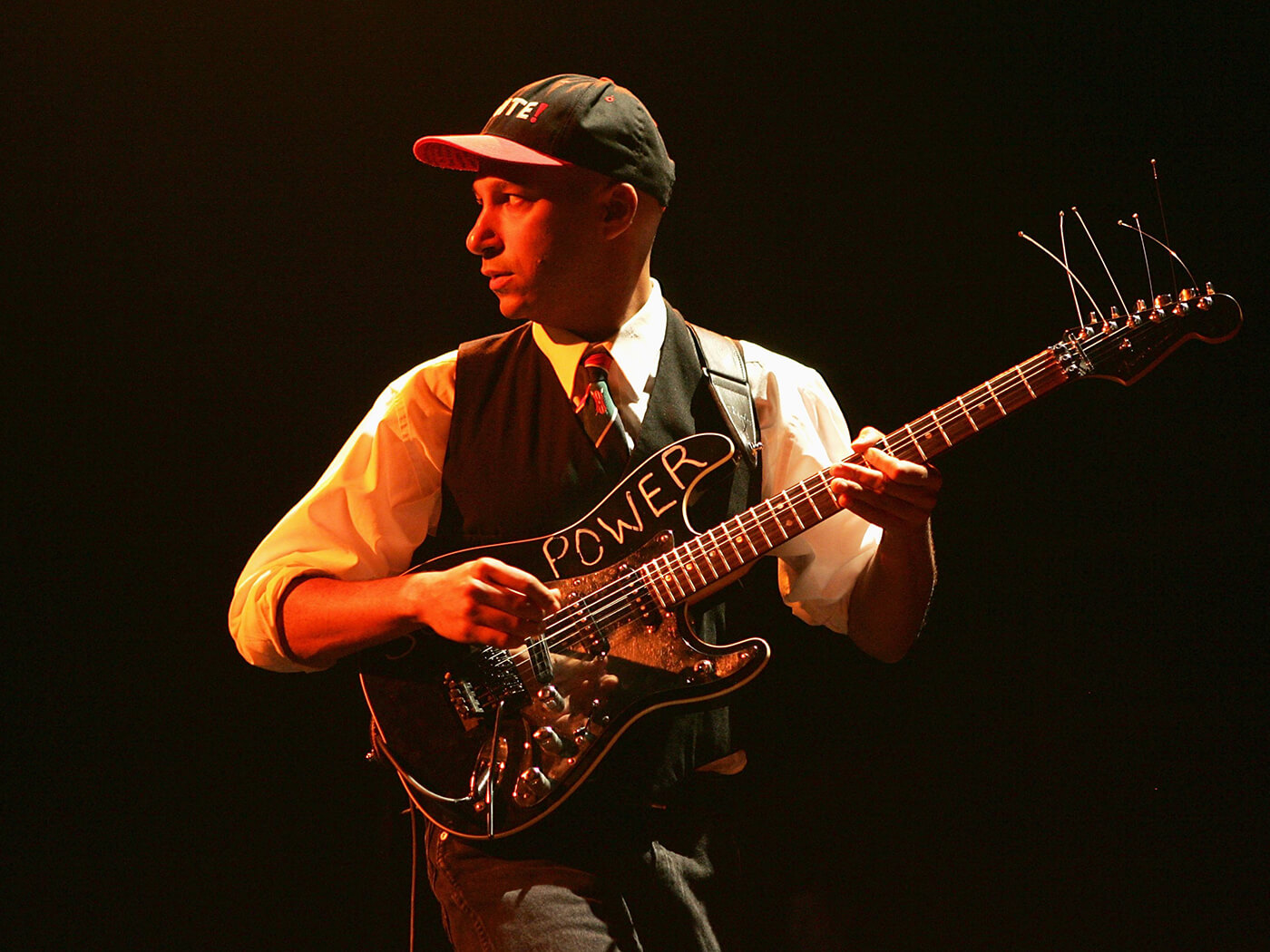
His ‘Soul Power’ Strat is a limited-edition Fender Aerodyne Stratocaster originally made just for retail at Guitar Center. Morello originally just liked the look: the Japanese-made Aerodynes had an arched top and binding, which was very un-Strat-like, though owner’s rate them as very high quality. They’re notable for light basswood bodies and C-shape necks. Morello’s original had a black body with white binding and a colour-matched headstock, and gained a mirror pickguard, an Ibanez Edge double-locking Tremolo, a 2-way on/off toggle switch wired as a kill switch on the lower horn, a Seymour Duncan Hot Rails pickup in the bridge and two Fender Noiseless pickups in the middle and neck positions by the time he was through modding. The Soul Power guitar came more to the fore in Audioslave, and Fender released a Signature model of the guitar (with proceeds from the guitars going to various musical charities) as part of their 2020 Artist Series collection.
It’s the first time Morello has endorsed any instrument (he once famously said: “gear doesn’t matter”), and he said he only agreed because there was “a crucial charity/social justice component to the whole procedure, and to that end, we’re giving away hundreds of guitars.” Watch Tom explain the project.
The guitars went to Wayne Kramer’s Jail Guitar Doors, which uses six-strings as a means of rehabilitation for prisoners, as well as the Fender Play Foundation, which donates instruments to local youth organisations. Both the ‘Arm The Homeless’ Strat and ‘Soul Power’ are played in standard E tuning.
In both RATM and Audioslave, he also touted two Fender Teles predominantly strung in drop-D. Maynard James Keenan from Tool taught Morello how to utilise drop D tuning around the time of the grunge boom, but “I couldn’t do it on Arm The Homeless because of the locking nut.”
His ‘Sendero Luminoso’ Tele is a stock black 1982 American-made Standard model, acquired in a trade for a Marshall head with a roommate. Morello taped various pictures on its body and most notably the slogan ‘Sendero Luminoso’ (translation: Shining Path) carved into the body. It also has a red hammer and sickle communist party sticker.
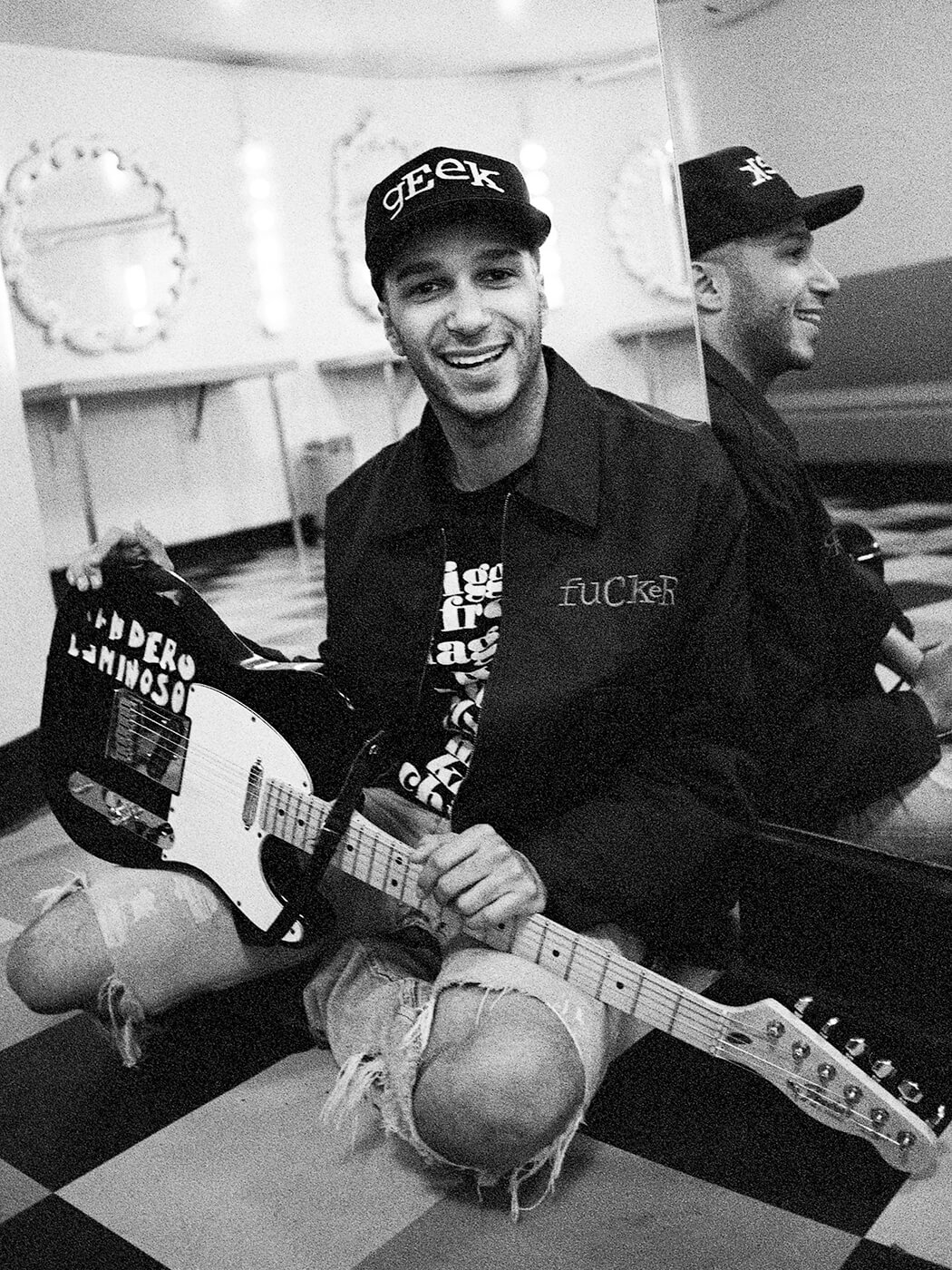
Controversially, Sendero Luminoso is the name of Peru’s now-splintered Marxist–Leninist-Maoist guerilla group: Sendero Luminoso is proscribed as a terrorist organisation in Peru itself, plus by Japan, the United States, the European Union, and Canada, and has been attributed with murder and human rights abuses. Still, the same-name guitar sounds wicked on Killing In The Name Of. Sendero Luminoso the actual guitar is close to Morello’s heart, though, as that roommate was the now-deceased Scott Tracy, once of avant-metal band Liquid Jesus who were signed to MCA (most notable album, Pour In The Sky of 1992).
Morello’s other Fender Telecaster is less discussion-worthy. It’s simply black with white binding, a mirror pickguard, Fender Noiseless pickups and fitted with a toggle switch on the lower horn.
These are Morello’s main guitars, though he also many lesser-seen others. The first is a well-known Ibanez Talman. This cool but strangely fringe 90s electric has three single-coil lipstick pickups, an Ibanez Lo-Pro Edge tremolo, a killswitch and Morello added a custom Kenyan flag finish. He uses it on Revolve, How I Could Just Kill A Man, and Pistol Grip Pump (with for RATM) and Exploder (for Audioslave). Part of his Talman’s appeal is a faulty pickup that makes odd feedback noises – Morello learned how to alter he sounds by adjusting the tone knob and using the guitar’s vibrato. He has a second white Talman, used for songs in drop D that require a killswitch. His alignment with Ibanez resulted in them building him a one-off red/black Ibanez Artstar Hollowbody, based on an old Vox Ultrasonic, and fitted with several on-board effects (wah, echo, distortion, and treble/bass boost).
He has a number of Gibson Les Pauls. The ‘Budweiser’ Les Paul (originally with the beer makers’ logo) was originally a somewhat naff-looking corporate gift from producer Brendan O’Brien prior to recording of Audioslave’s third album, Revelations, and used across the whole record. Morello hated the logo (he hasn’t drunk alcohol since 2002) and burned it off with a lighter, and liked the outcome. It’s fitted with DiMarzio pickups.
He has an orange burst Les Paul Standard as well, tuned to drop B for certain Audioslave and Street Sweeper Social Club songs. A tobacco burst LP was also played in Street Sweeper Social Club (see the video for 100 Little Curses) and another in a Cherry Red finish, tuned to drop D and played in Audioslave for Soundgarden covers. None of these are vintage models, though. Morello is no vintage fetishist. He also has a Jimmy Page-style Gibson EDS-1275 double-neck in cherry, tuned to drop D on both necks. It became best known when RATM covered Springsteen’s The Ghost Of Tom Joad live and also when Morello played live and sang with Springsteen on the High Hopes album and tour.

He also owns an old St George Goya Rangemaster copy (known as ‘Creamy’) which he again fitted with a Seymour Duncan Hot Rails pickup at the bridge. This one is tuned DADGBE or Open A. St George was a 1960s Japanese brand , obvioulsy designed to appeal to ‘British Invansion’ fans who visited the St George stores in New York and Hollywood. Kooky, but cool.
The closest thing Morello has to an indulgence boutique purchase is his James Trussart Steelcaster, with a red star graphic over the front. He has that fitted with a Seymour Duncan Alnico Pro II in neck position and a Hot Rails at the bridge, and it also has a killswitch. A backup is identical, but has a polished finish.
Morello also owns a number of 1970s Ovation Breadwinners: he likes them as players, but they’re usually confined to the studio as he thinks they’re ugly (who doesn’t?). And, finally for now, Tim Commerford gave him a Music Man St Vincent in 2018 as a gift. Maybe we’ll see more that unique guitar in the future.
Acoustic interludes
In his guise as The Nightwatchman, Morello tends to favour a black Gibson J-45, known as ‘The Black Spartacus’. He added that legend and his own symbol on the left of the bridge, which combines the Kenyan, Italian and American flags along with a hammer and sickle.
He also plays a Tanglewood acoustic and his ‘Whatever It Takes’ guitar – an Ibanez Galvador classical acoustic with the slogan and a star emblem. “Whatever it takes” suits as a reference to his radical politics, or even a reference to earning a living as a stripper. It’s also the title of his pictorial biography, published in late 2020, which has great detailed shots of all his gear.
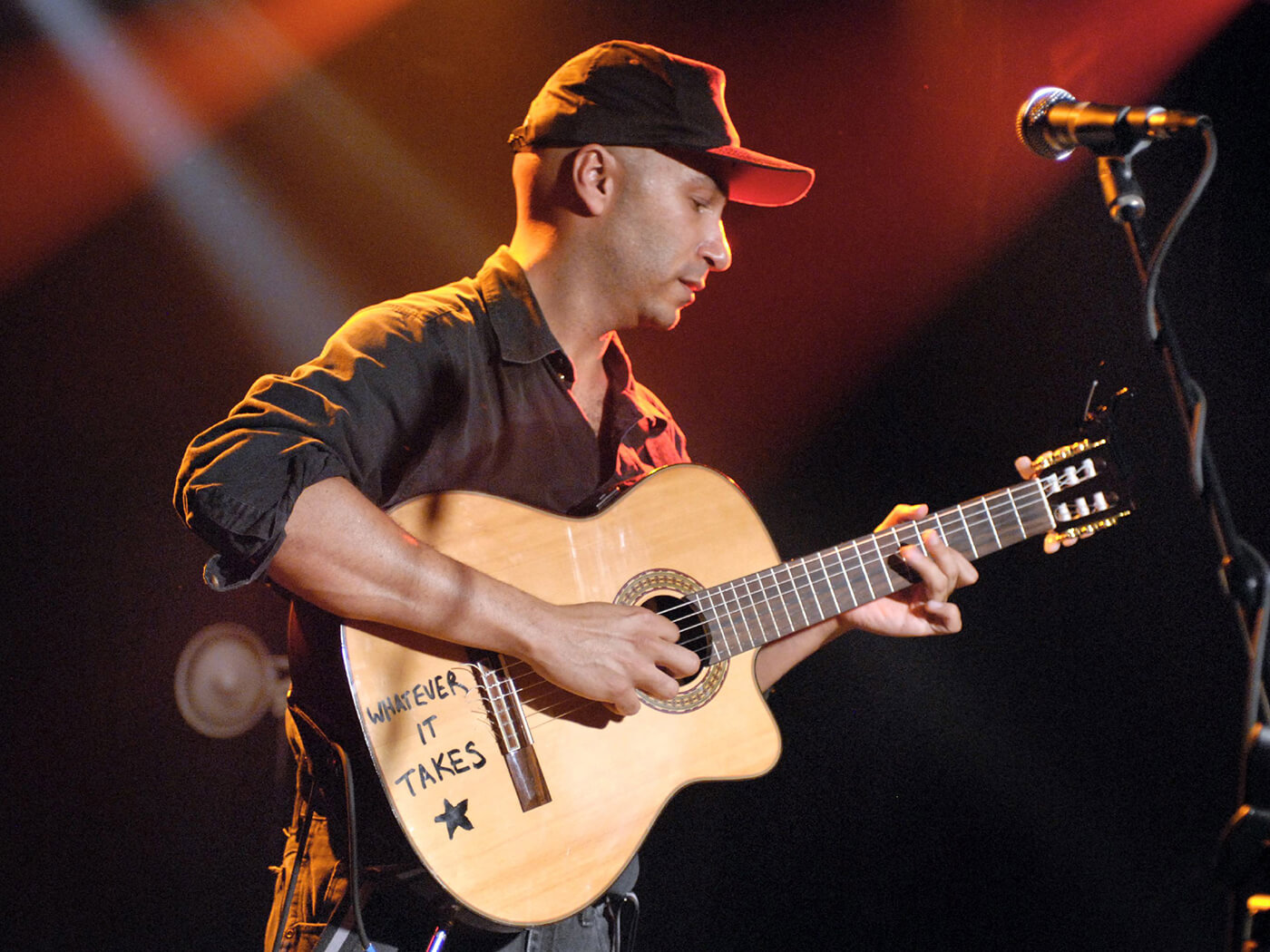
Amps & effects
Morello’s a Marshall man. As you’d expect from a player with such a catalogue, he has plugged into other amps – a Line 6 for the clean lines of Mic Check, plus occasionally a Pignose mini-amplifier, a Music Man Fender Twin-style combo, and even a Vox AC30 borrowed from producer Brendan O’Brien – but his go-to is his Marshall JCM 800 2205 50-watt head and a Peavey 4×12 cabinet. This set-up dates way back to his pre-RATM band Lock Up. The Peavey cab might be seen as an odd choice? Truth is, when he bought his trusty Marshall, the Peavey was the only 4×12 cab in the shop so he bought it and has never changed it. (His gear had been stolen and he needed a new backline quick for a gig.) He uses an Orange Crush 12 (according to his Instagram posts) as a backstage warm-up combo.
His effects are similarly long-standing, and most are now in the realm of ‘old school’ or even ‘vintage’.., if not exactly expensive. He’s made the most of Digitech’s Whammy pedal – the original WH-1 of 1989. Some example settings on his biggest tunes are:
- Killing In The Name, Bullet In The Head, Fistful Of Steel, Renegades Of Funk, Calm Like A Bomb – whammy 2 octaves up
- I’m Housin’, How I Could Just Kill A Man – harmony 1 octave up
- Ghost Of Tom Joad – harmony 1 octave down
- Testify – harmony up a 7th
- Wake Up – whammy 1 octave up, harmony up a 7th
- Bulls On Parade, Vietnow, Down Rodeo, Without A Face – harmony 1 octave down
- Know Your Enemy – harmony up a 5th
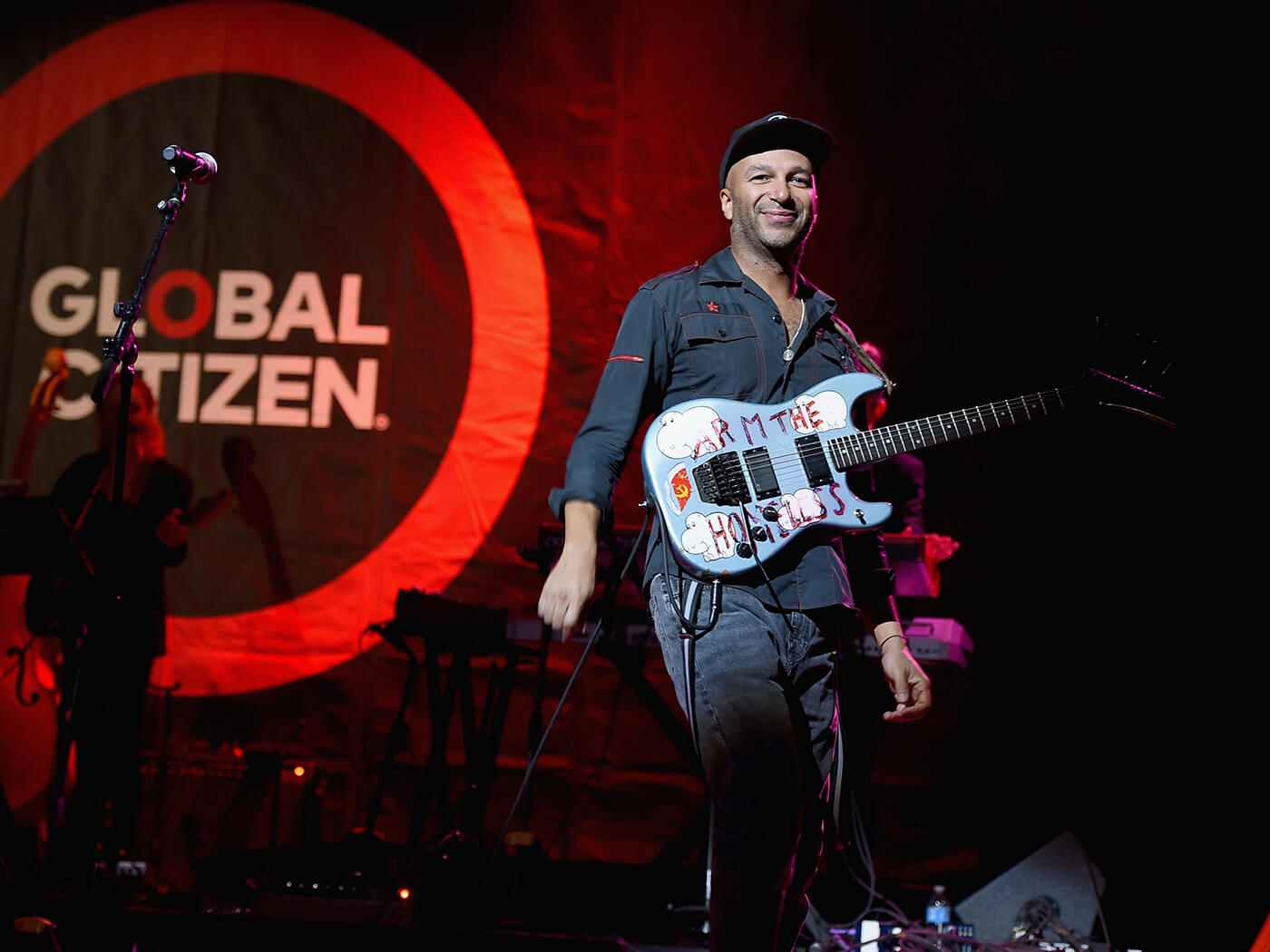
His wah is a Dunlop GCB95F Cry Baby Classic Wah Wah… his signature Dunlop Tom Morello Wah Red is essentially just cosmetically different. He favours Boss stompboxes elsewhere: a TR-2 Tremolo, a DD-3 Digital Delay, and TU-3 Tuner, and he also uses an MXR Phase 90. But for someone who makes such otherworldly sounds, that is relatively straightforward. Like he says, he’s uses relatively simple gear and just made it his business to explore its possibilities to the max. Morello may joke that “gear doesn’t matter”, but that’s clearly nonsense. You won’t get to sound anything like Morello without at least a Whammy and a wah.
But he’s certainly made the most of his old-school tools. Heed the words of ex-school and bandmate Adam Jones of Tool: “It’s just amazing to me now how much Tom sucked at that moment when I met him, and now no-one can touch him!”
Here’s two Morello live rig diagrams – Rage Against The Machine era and Audioslave era.
Essential listening
Morello’s style is a mixture of killer riffs and stunning off-the-hook sonics. Strap on this playlist for some of his most explosive work…
